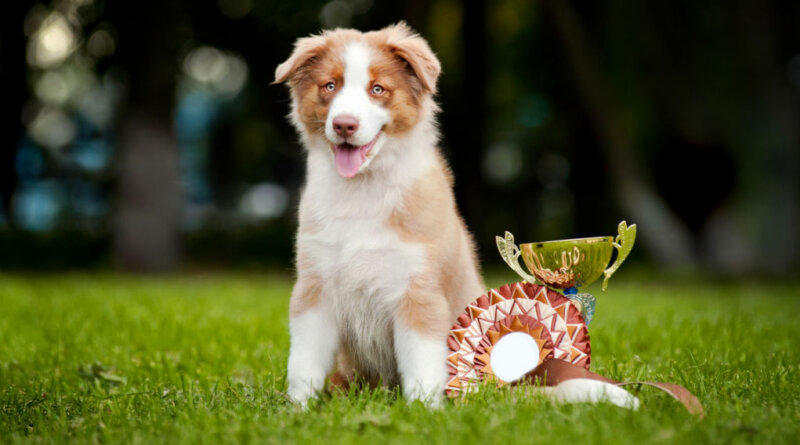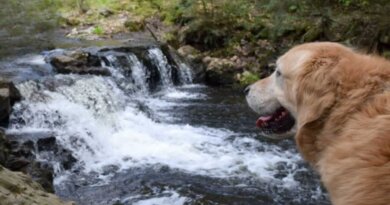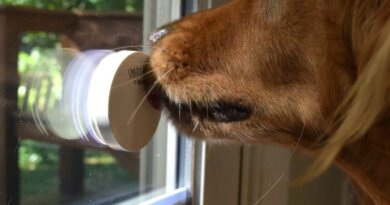The Ultimate Dog Show Guide – Top Dog Tips
A dog show is commonly called a conformation event, intended to evaluate and assess the breeding stock of different dogs.
The size of the event can vary significantly, with large all-breed shows covering over 3,000 dogs and small specialty club shows only hosting a specific breed.
A dog’s conformation strongly indicates the animal’s ability to produce quality puppies.
While some people believe a dog show is a beauty pageant for dogs, it’s not.
Most shows will assess the breed standards, including the characteristics to perform a function or job.
This definition will evaluate the physical structure, muscles, bones, coat, teeth, temperament, and gait.
The closer the canine’s qualities are to the outlined breed specification, the more likely it could produce litters to meet the breed’s standards.
This condition is why spayed and neutered purebred dogs and crossbreeds aren’t eligible to compete.
Dog Show Guide: Different Types of Conformation Dog Shows
Currently, there are three different types of dog shows, including:
All-breed Shows
These shows will hold over 175 different breeds and variations of dogs recognized by the American Kennel Club.
Most major television networks will televise larger-scale all-breed shows.
Specialty Shows
Judges restrict these shows to specific variations or breeds.
For instance, the Poodle Club of America will have a specialty show featuring all three poodle varieties (toy, miniature, and standard).
In contrast, the Bulldog Club of America will only host Bulldogs.
Group Shows
These shows are limited to canines within one of the seven groups.
The AKC defines the seven dog groups: hound, sporting, working, terrier, toy, herding, and non-sporting.
Only dogs registered within these categories can register for these events.
The Best in Show
The show organizers will group all dogs according to AKC-recognized groups; each breed will fall into one of the seven defined categories.
All-breed shows will include a Best in Show category, with first-place winners competing for the ultimate award.
Sporting Group
The sporting group of dogs will hunt birds on land and water. This group’s breed will include Setters, Spaniels, Retrievers, and Pointers.
Working
The working group was bred with jobs, as the name implies. These dogs perform search and rescue, pull carts, guard property, and more.
Breeds include Boxer, St. Bernard, Akita, and Doberman Pinscher.
Terrier
Originally, these dogs hunted vermin. The terrier dog group includes Scottish Terrier, Airedale, and Cairn Terrier.
Herding
These dogs helped on the farm, typically with ranchers and shepherds.
These herding dog breeds include the Collie, Briard, German Shepherd dog, and Old English Sheepdog.
Non-Sporting
This group is diverse, with dogs varying in size and function. Many dogs from the non-sporting group have won awards and ribbons.
Toy
These dogs have always been household companions.
This toy dog group will include little dogs like the Maltese, Pug, Pomeranian, and Chihuahua.
Hound
This group originally hunted other game by scent or sight. These hound dog breeds include Dachshunds, Bassets, Greyhounds, and Beagles.
The winners of these seven groups enter the ring, where they will ultimately compete for the Best in Show award.
The Best in Show is considered the highest award at the dog show.
Which Dogs Can Compete or Participate in Show
To participate in a dog show, animals must meet specific qualifications. These qualifications include the following:
- Individual registration with the American Kennel Club
- Be of a breed for which classes are offered within the dog show
- Be at least six months or older
- Remain intact (cannot be spayed or neutered)
- Meet all eligibility requirements in the written breed standard
A neutered or spayed animal is not eligible to participate in conformation classes at a dog show as the purpose is to evaluate breeding stock.
Different Classes Within a Dog Show
Every dog show will often begin with a breed-level competition. All registered dogs will divide according to gender, followed by a division of class.
These classes include the following qualifications:
Puppy Class
This group is for all pups between six and twelve months of age.
Occasionally, depending on the popularity, clubs may divide the class further into 6-9 months and 9-12 months of age at the time of showing.
12 to 18-month class
This group is for dogs between 12 months old and under 18 months.
Similar to the Puppy Class, this group may divide further into 12-15 months and 15-18 months, depending on the club and popularity.
Novice Class
According to the show guidelines, dogs in this class must meet a few specifications. This class includes dogs that have either:
- Got 1st place in American-Bred, Open, Amateur-Owner-Handler, or Bred-By-Exhibitor Classes
- Not previously won three first-place awards in the Novice Class
- Have yet to earn one or more points leading to the championship
Amateur-Owner-Handler Class
This class is meant for dogs who are handled by registered owners. To qualify for this class, the owner never:
- An AKC-approved conformation judge
- Employed as an assistant to a professional handler
- A professional dog handler
Bred-By-Exhibitor Class
This class is reserved for canines owned and handled by the breeder exclusively.
American-Bred Class
This class includes all dogs whose sire and dam were mated in the United States and were born in America. This is a required class for conformation shows.
Open Class
The open class is another required class that any dog may enter. This is the only class that allows Champs to enter and compete.
Understanding the Judge’s Role
A judge will examine the dog and offer an award according to how closely each dog compares to the “mental image” of an ideal dog.
The judge bases this ideal on the breed’s official standard.
The breed’s standard will describe all characteristics that allow the breed to perform any functions it was to complete.
Criteria typically include specifications for temperament, movement, and structure.
All judges are experts on the breeds they are judging. The breed’s national club holds all breed standards and is formally included in The Complete Dog Book by the AKC.
Each individual will examine each dog with their hands to see if the muscles, bones, teeth, and coat conform to the definition of the breed’s standard.
They will then view each dog from the profile to see the overall balance and evaluate the gait (how the dog moves) to assess all features simultaneously in action.
A judge will award the first through fourth position in each class, giving a ribbon to each dog receiving an award.
The color of the dog’s ribbon will depend on the award the dog has won.
How a Dog Show Works
Every dog within a category will present to a judge by its breeder, hired professional, or owner.
The role of a handler is similar to a jockey, to guide the animal around the track. Many dogs within the competition are competing for points toward AKC championships.
These wins must include two major wins of at least three, four, or five points.
Fifteen points by at least three different judges are required to become an American Kennel Club Champion of Record.
The number of championship points awarded at a dog show will depend on the number of males and females in the competition.
The larger the entry of dogs, the greater the number of points a female or male can win. The maximum number of points awarded to any dog at the show is five.
After all of the classes are judged, all dogs winning first place in a class will compete again to see who the best of the winning dogs is.
Furthermore, all males and females are judged separately within this category.
Only the best male (Winners Dog) and female (Winners Bitch) will receive championship points after this round.
The winners of these two rounds will compete against the champions for the “Best of Breed” award.
Awards Given in Dog Shows
Typically, the judges hand out three awards at the end of the competition.
Best of Breed
This award goes to the dog identified as the best in its breed category. This title may also award Grand Champion points.
Best of Winners
This award goes to the dog judged as best between the Winners Dog and Winners Bitch.
Best of Opposite Sex
This award goes to the best dog that is the opposite sex of the Best of Breed winner.
Grand Champion points are often given if the dog is Champion of record.
Grand Champion Dog Show
The Grand Champion is a champion of record competition, competing against other champions of record beyond the standard requirements.
All Champions of record are eligible to be awarded points toward this Grand Championship level.
Currently, there are five levels of Grand Champion status available.
- Grand Champion
- Grand Champion (Bronze)
- Grand Champion (Silver)
- Grand Champion (Gold)
- Grand Champion (Platinum)
What is a “Select Dog”?
This award is like the Awards of Merit, as this dog is the next best in terms of quality in the competition.
Judges chose the winners of these awards after the Best of Breed/Variety and Best of Opposite Sex awards.
The Select Dog is eligible for Grand Championship points.
What is a “Select Bitch”?
This award is similar to Awards of Merit, as this dog is the next best regarding the quality of Bitches in the competition.
Judges select the winners of these awards after Best of Breed/Variety and Best of Opposite Sex.
The Select Bitch is eligible for Grand Championship points.
Understanding the Road to Best in Show
As dog shows are a process of elimination, only one dog can receive the Best in Show and Reserve Best in Show at the end of any All-Breed Show.
Only the Best of Breed winners will advance to compete in the Group competitions. Every AKC-recognized breed falls into the seven group classifications.
Ultimately, judges award four placements in each group, but only the top winner will advance to the Best in Show competition.
Ribbon Distribution at Dog Shows
The judge gives every dog that wins an award or a ribbon. The color will indicate the type of award as follows:
Blue Ribbon: Judges award this ribbon to the first-place dog in any regular class. Judges also award this color to the winner of each group competition.
Red Ribbon: Judges award this ribbon to second place in any class. Judges also award this color for each group competition.
Yellow Ribbon: Judges award this ribbon for third place in each class. Judges also award this color for each group competition.
White Ribbon: Judges award this ribbon to fourth place in each class. Judges also award this color for each group competition.
Purple Ribbon: Judges award this ribbon to the Winners Bitch and Winners Dog classes. Many highly regard these ribbons as these are classes for championship points.
Purple and White: Judges award this ribbon to the Reserve winners (runner-up) to the Winners Bitch and Winners Dog classes.
Blue and White: Judges award this ribbon to the dog that wins Best of Winners (the winner between Winners Bitch and Winners Dog).
Purple and Gold: This ribbon is awarded to the “Best of Breed” in each breed competition. This ribbon allows advancement to the Group competition.
Red and White: Judges award this ribbon to the Best of Opposite Sex.
Light Blue and White: Judges award this ribbon to the Select Dog and Select Bitch in the Best of Breed competition. They are awarded points towards earning the Grand Championship Title.
Red, White, and Blue: Judges award this ribbon to only one winner throughout the show. Judges give this ribbon at the end of the show and go to the ultimate winner, Best in Show.
Dog Show Guide: Conclusion
Dog shows are more than just a beauty pageant for canines; they recognize breed standards and their influence on various breeding standards.
As such, only intact, purebred dogs can participate in dog shows. Mixed breed, spayed, and neutered dogs cannot register for these dog shows.
These conformation events evaluate a dog’s appearance and structure as an appreciation for the breed.
Dog shows look for pups matching the breed profile, which can influence puppy quality.
Winning awards can help secure the breed’s natural characteristics and helps quality dogs continue breeding safely and professionally.
READ NEXT: TOP #57: How to Get Started in Dog Shows









